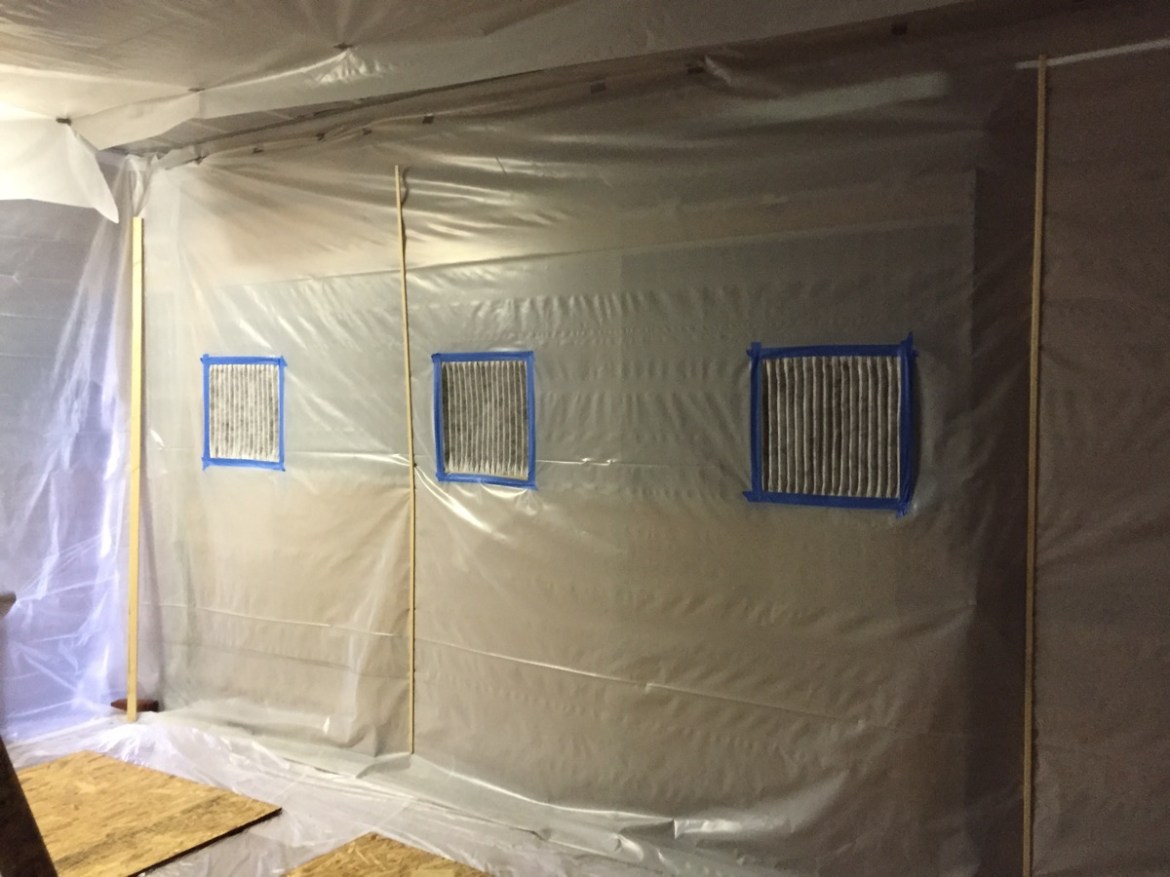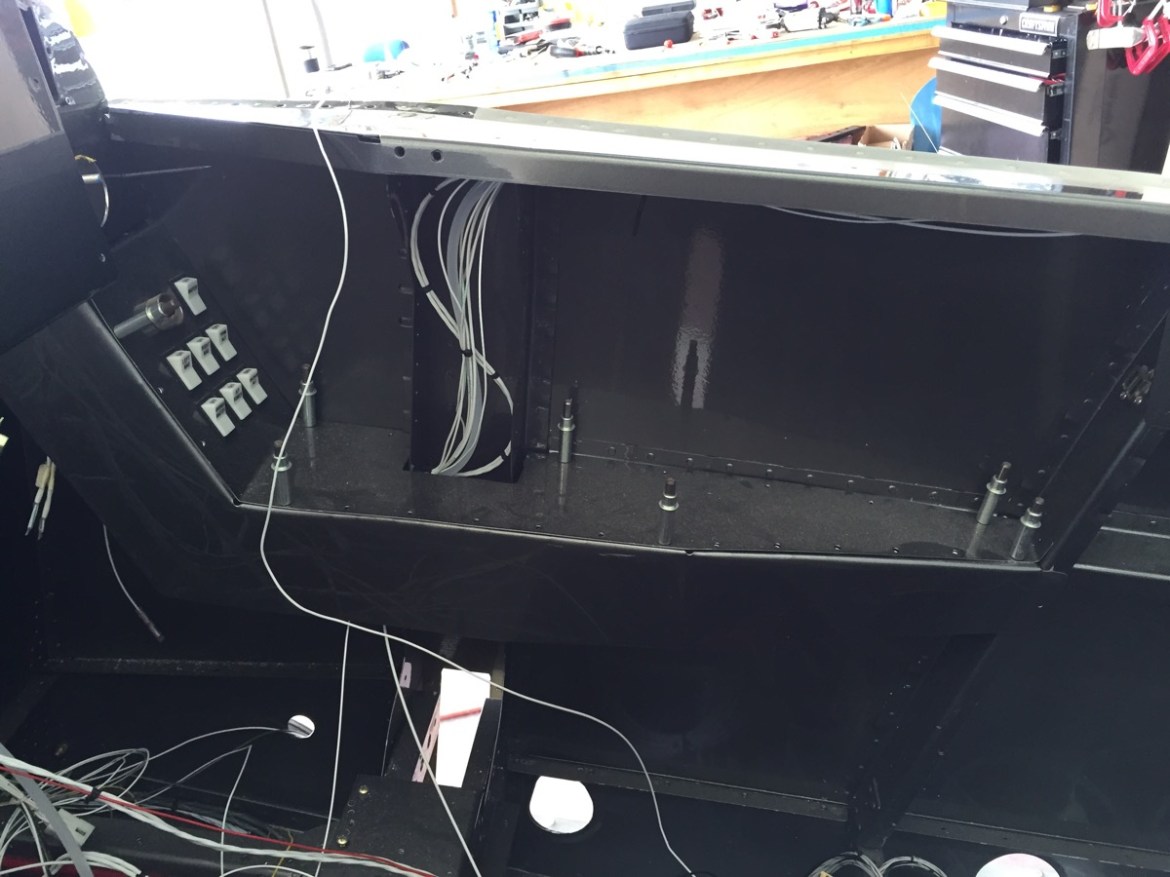Fuselage 16 (4.0 hrs)
First up, installing the filter on the compressor. Now, you’re supposed to install filters downline, at least 50′ from the compressor for maximum effectiveness. Right next to the compressor, most moisture will pass straight through. Regardless, I don’t have the room, time, or desire to plumb my portable compressor, so this will have to do. 

A little riveting action holds it all in place! 
With this complete, its time to start the installation of the rudder pedals. To make things easier I removed the bulkheads from the baggage compartment. While I’m at it, I’ll put new primer on those puppies.

I am installing the ground adjustable rudder pedals. The first step is to mark a centerline on the two angles that will hold the rudder pedal axels to the floor. 
Then you need to work on the friction bushings for the rudder pedal axels. I hate working with this plastic. Be careful how you orient the cuts and holes. Van’s, in true form, has provided the absolute bare minimum amount of material. 

After cutting the pieces out, I drilled the largest center hole first. This allowed me to mount the friction bushing and then match drill the final two smaller holes.

I used the first completed bushing as a template for the second. 
Here are the finished products.

Next, I put the rudder pedals together to check certain measurements. 
First you need to check that the outside edge of the angles is 15 1/4″ apart. As you can see, I’m spot on. 
This needs to be 1″ from the floor. Bang on again. 

Now this is where things get interesting. Earlier, I had to drill out, and replace a few AN470 rivets with flush pop rivets. However, the holes for my angles are immediately overtop of these rivets. I double and triple checked the measurements. 
Here’s a close up. You can see the center of the pop rivet almost directly underneath. There is no way this is going to be drilled for another rivet. I suspect it will have to be left empty.


The same is true at the other end.

I’ve labeled all the appropriate measurements, per the drawings, so I’m not sure why its so far off. 

As you can see here, the rivet I replace should not be directly underneath the angle. I don’t see any solution except to forego putting a rivet in this location. 
At the forward side, you are supposed to file a slight relief. This will not work in my circumstances. I’d need to file half the angle away! I’m going to sleep on this and then possibly contact Van’s support to see if I’m overlooking something. 
Update August 17, 2015: Solution to the above problem can be found here: http://papalimabravo.com/construction/fuselage/fuselage-18
The last project for the day was to start on the rear rudder pedals. I primed the insides and then drilled for the threaded ends. I cleaned the primer off later with acetone. 

























